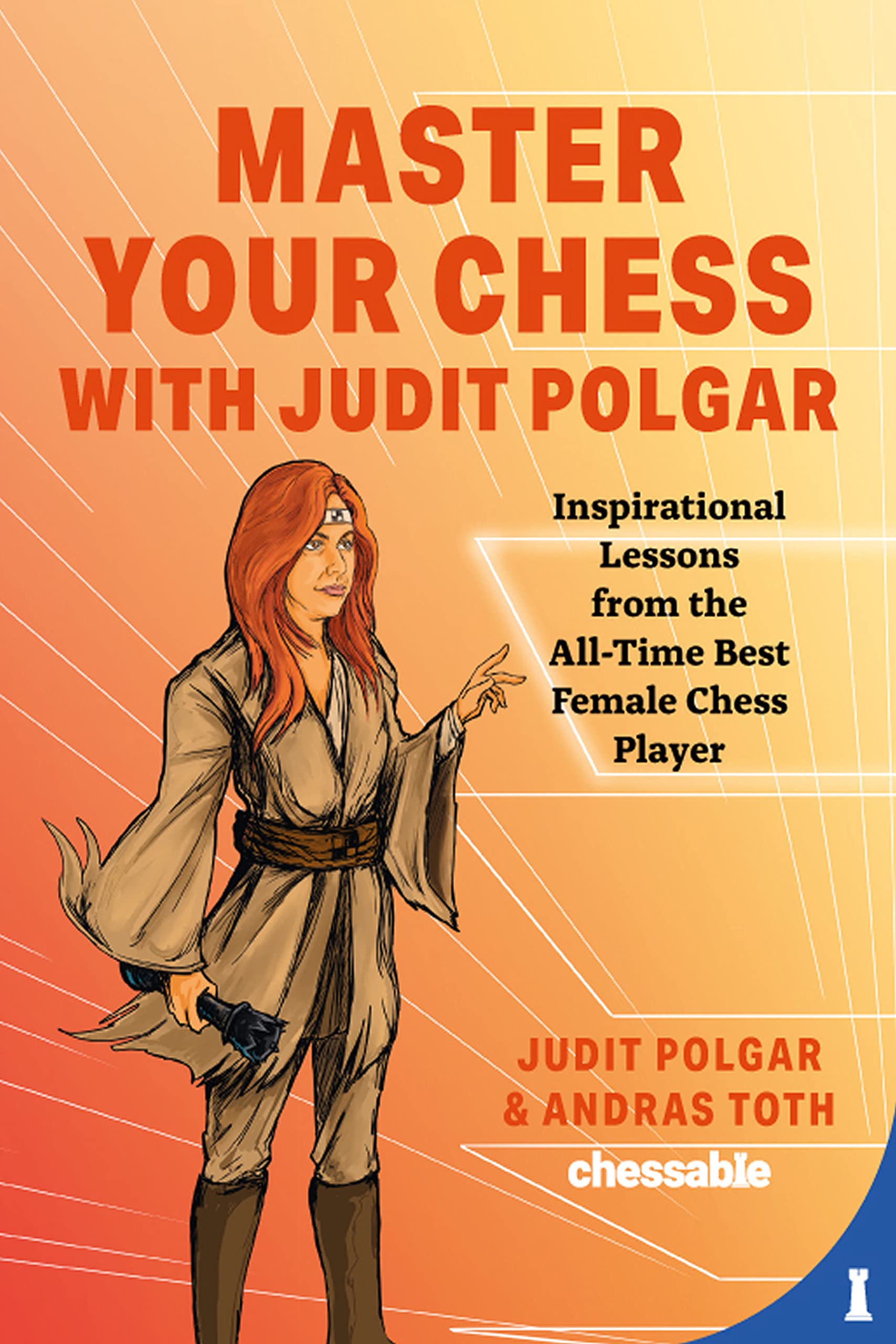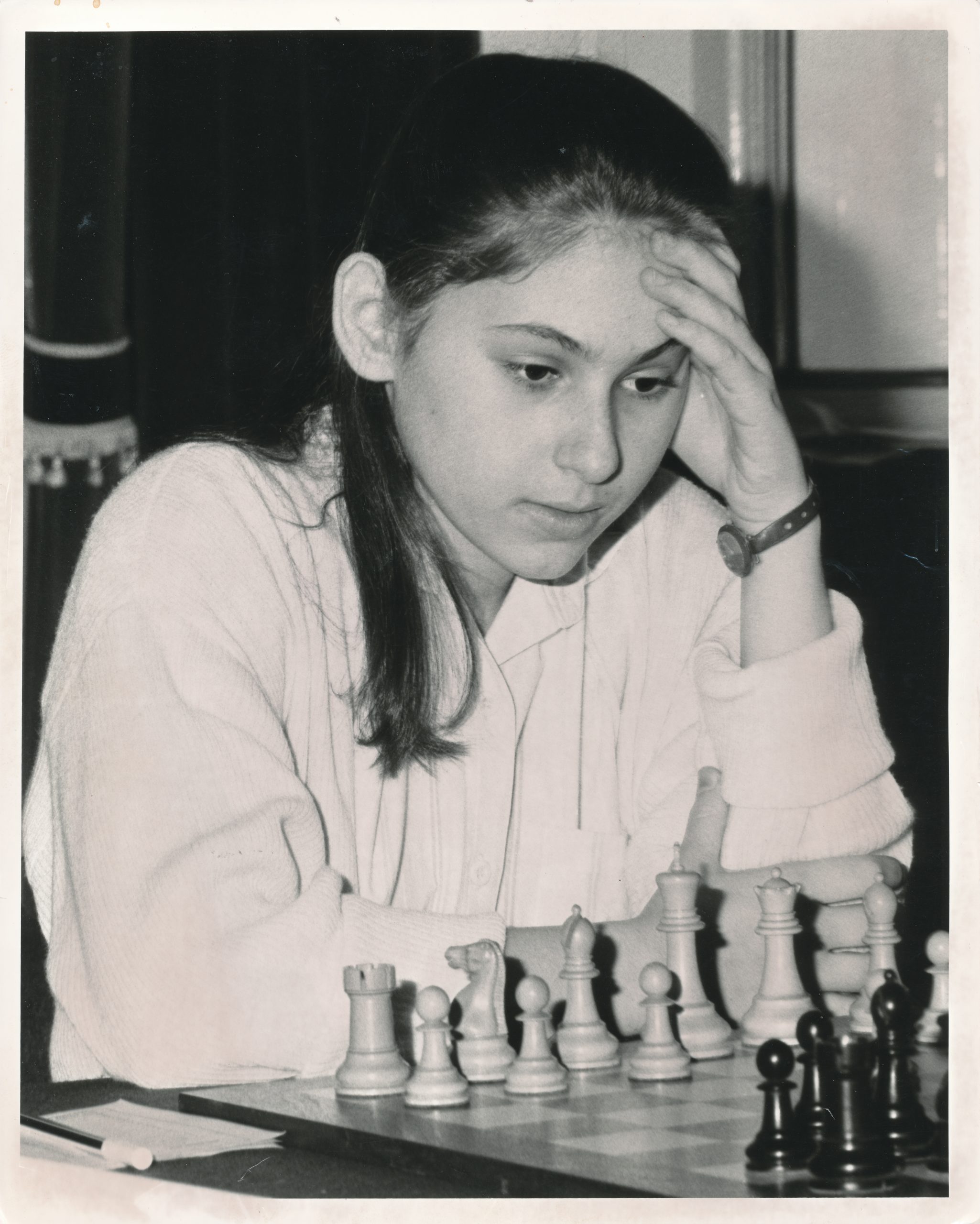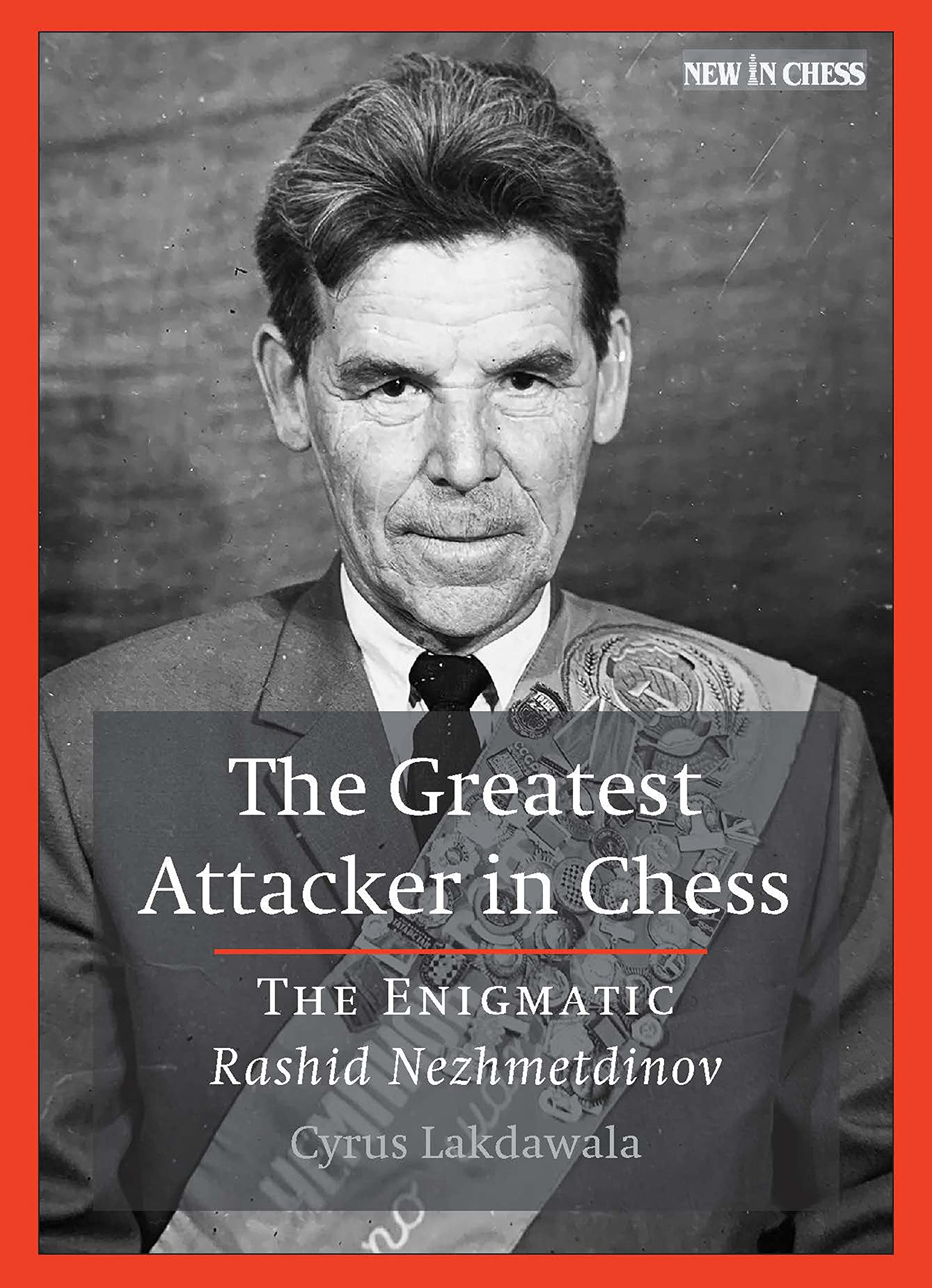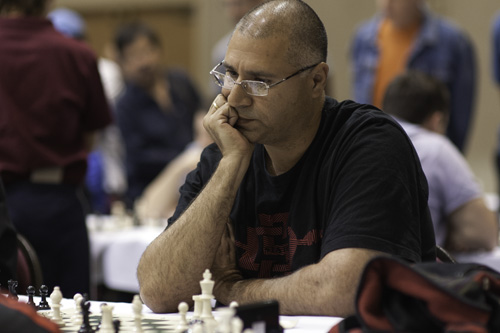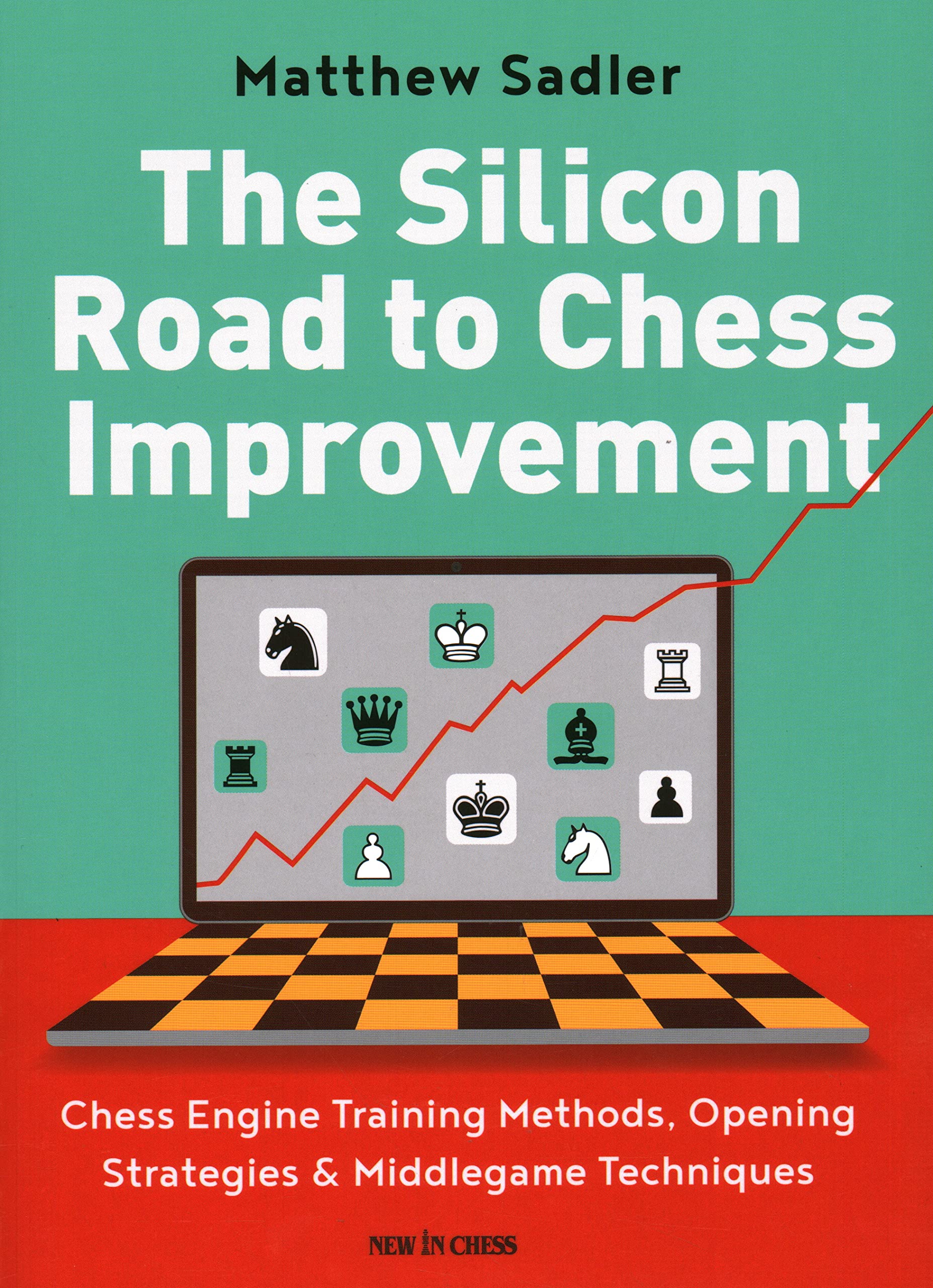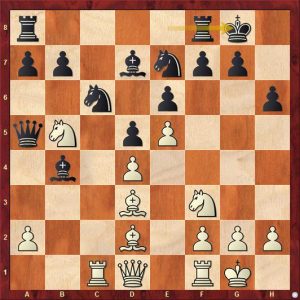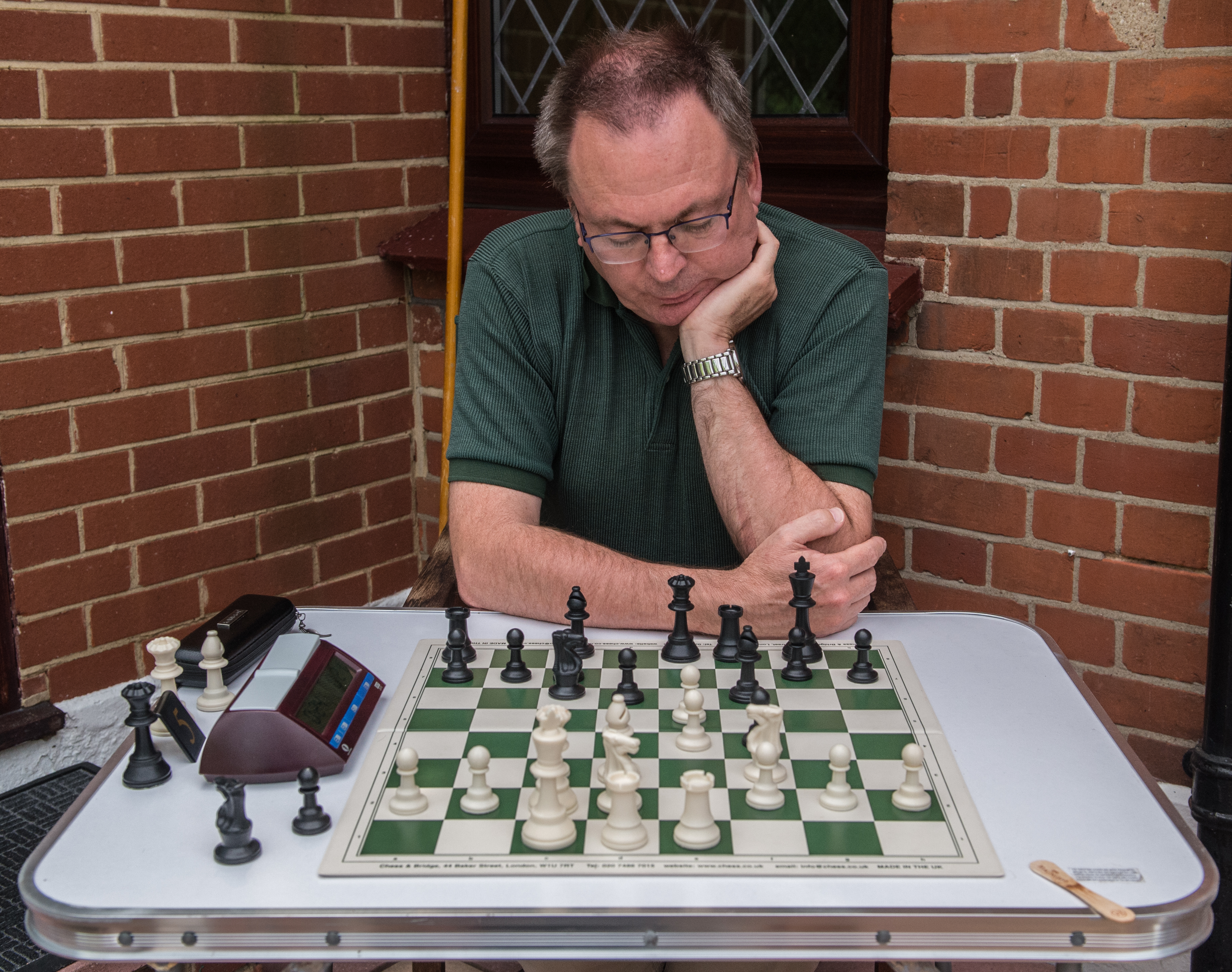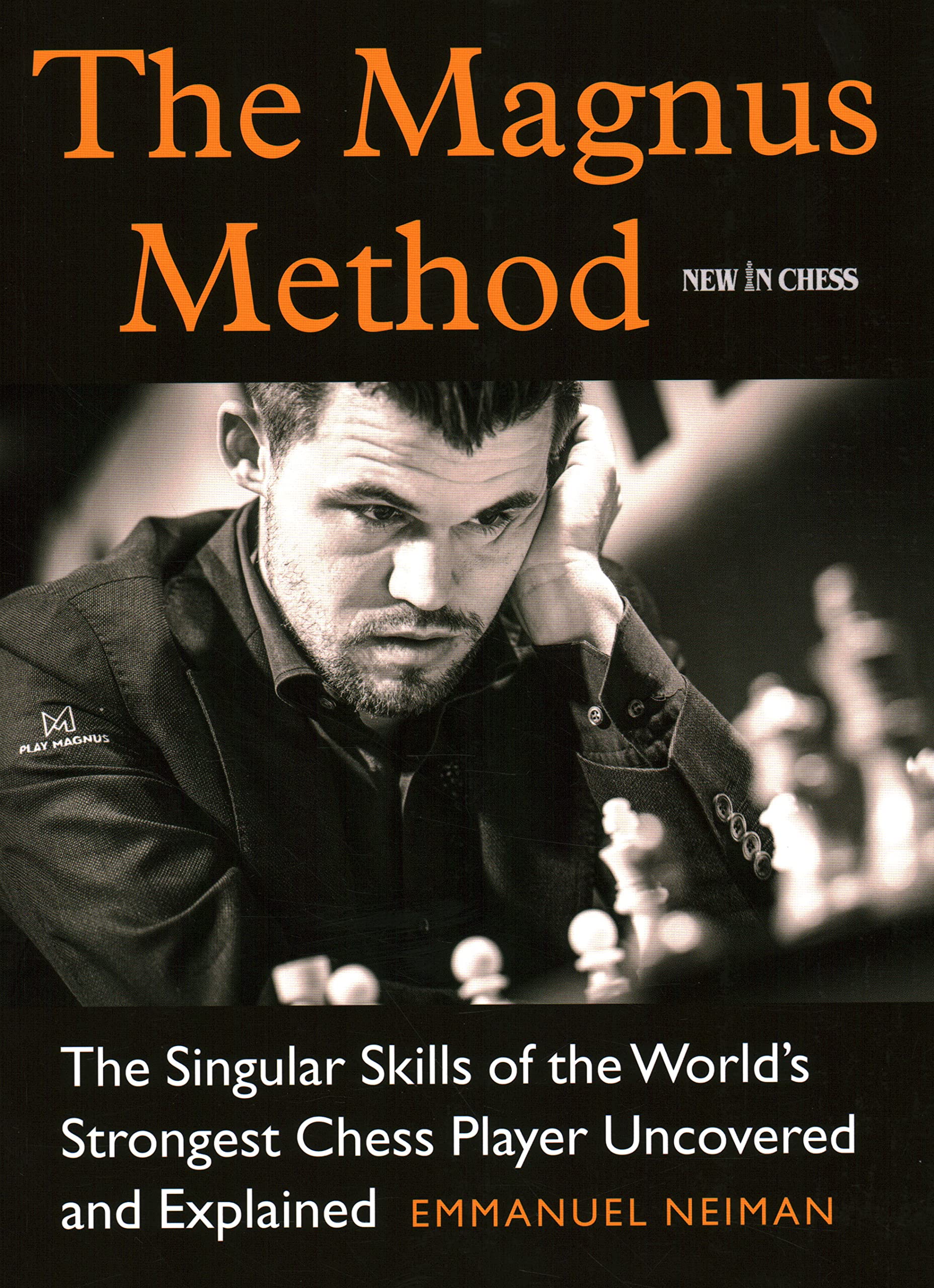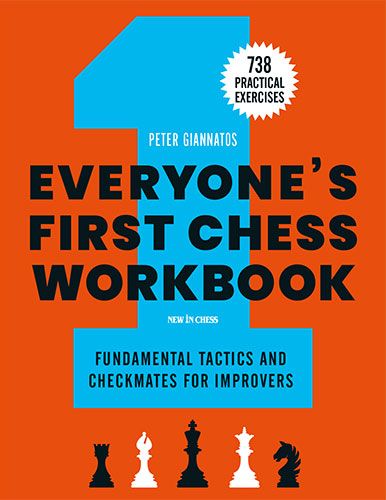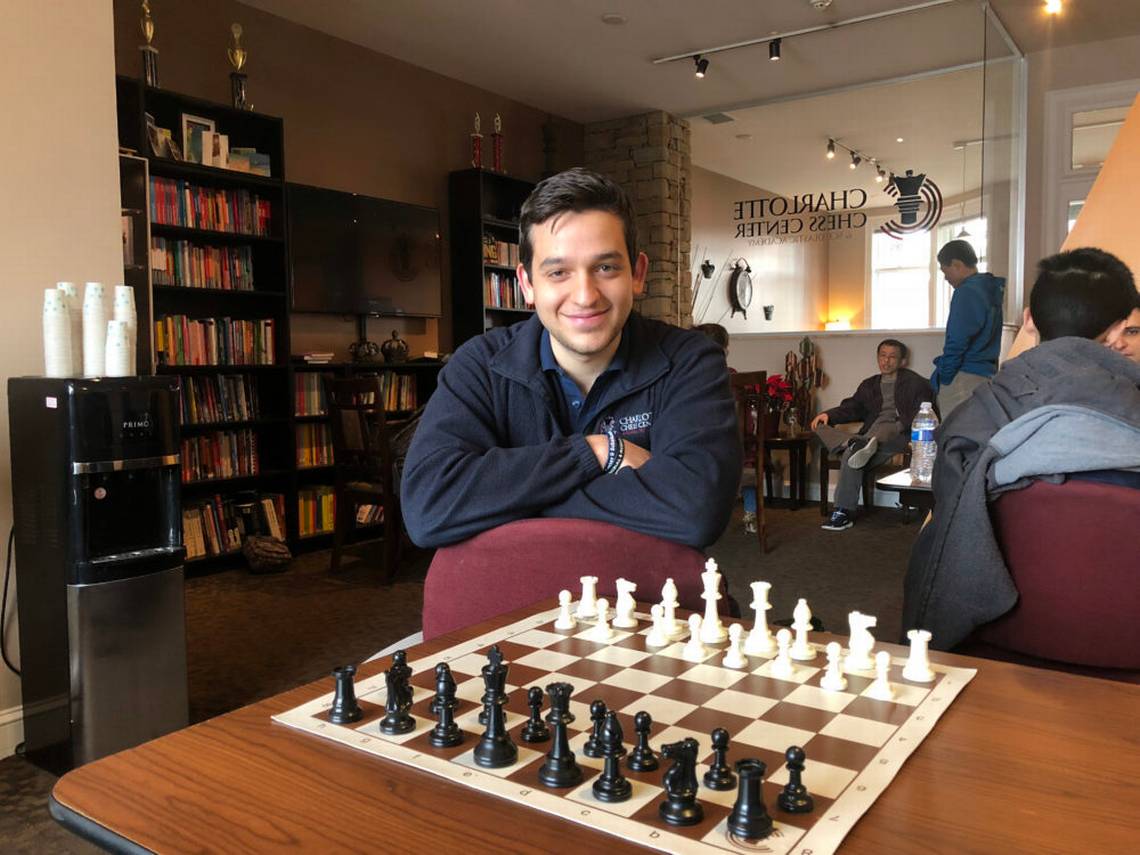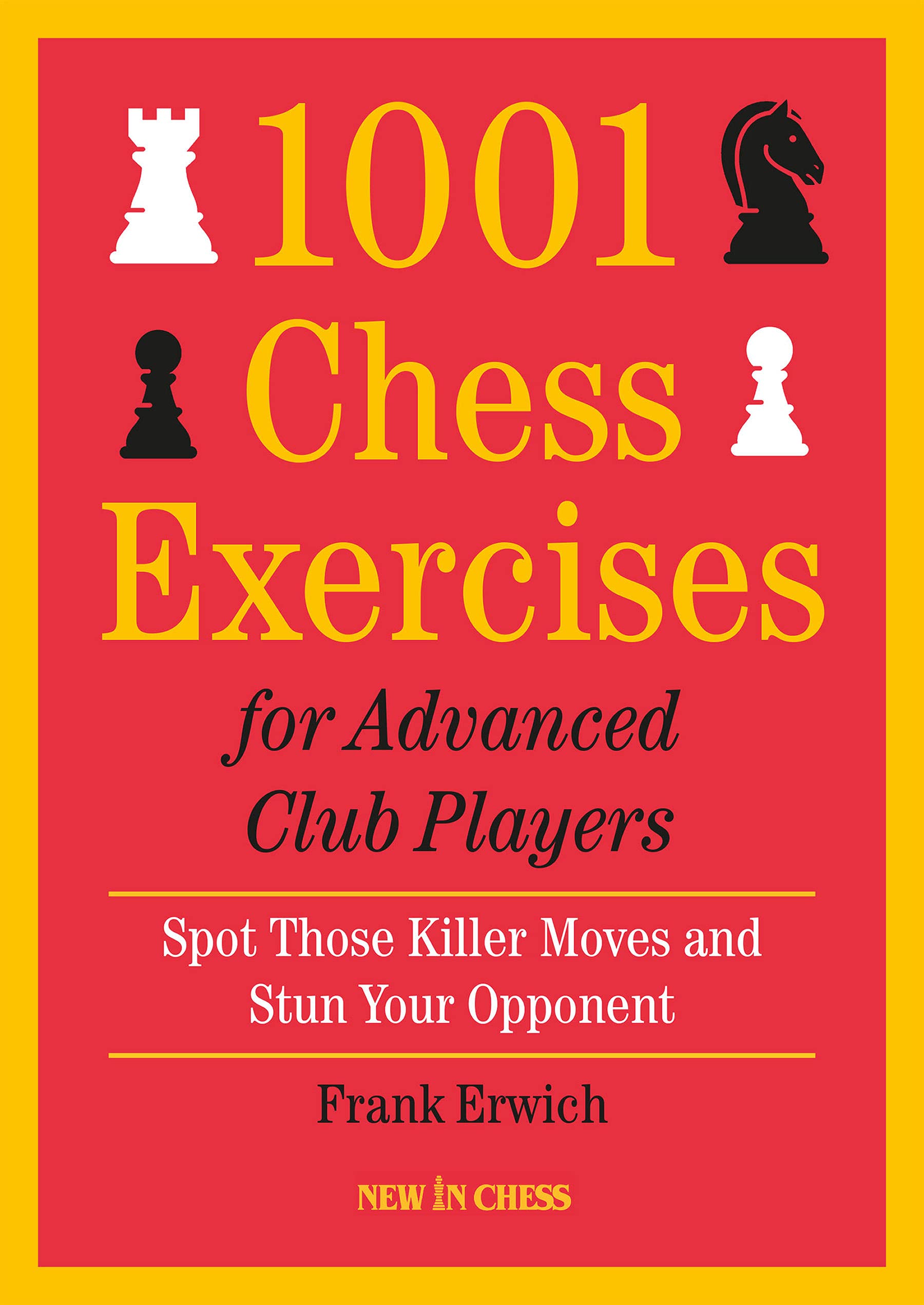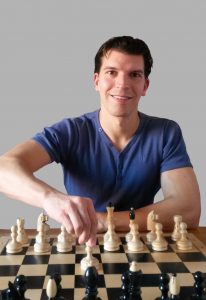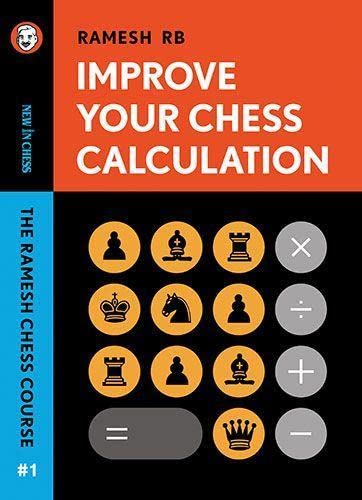
From the publisher:
“Calculation is key to winning chess games. Converting your chess knowledge into concrete moves requires calculation and precise visualisation. The bad news: calculation is hard work. You cannot rely on feeling or intuition — you will have to turn on your brainpower.
The good news: you can improve your calculation skills by training. Set up a position on a chessboard and try to solve exercises without moving the pieces! Grandmaster Ramesh RB is the perfect coach to awaken your chess brain and feed you precisely the right exercises. ‘After only a month of intensive training with Ramesh, I could sense a seismic shift in both the precision of my calculation as well as my general level of sharpness’, says GM Daniel Naroditsky.
“GM Ramesh is one of the world’s most successful coaches. He has trained many of India’s top talents at all stages of their development on their journey to become International Masters and Grandmasters. Ramesh understands what mistakes players can make while calculating. He knows that the best move in a specific position may be the opposite of what your intuition is urging you to play. And he serves you the exercises to correct these misconceptions and start finding the right solutions. Every chess player will benefit from the hundreds of exercises in this book. Coach Ramesh will take your calculation skills from a club players level to grandmaster level.”
This is the first of what promises to be a multi-volume series of coaching books under the title of The Ramesh Chess Course. As Ramesh is perhaps the world’s most successful chess coach this promises to be a treat for all ambitious players. As calculation is the single most important skill in chess, there’s no better place to start.
Ramesh starts off by telling us how to use the book. Here are his first two paragraphs.
- Have a good look at every position and try to understand what is going on behind the scenes. Compare the king positions, piece placements, pawn structure, material parity, etc., before beginning your analysis.
- Before we start analysing any move, we should make a list of reasonable looking moves and only then begin analysing them.
Good advice, although 2. is Kotov’s Candidate Moves idea, which not everyone finds useful in every position. Always useful when tackling the tasks set in this book, though.
The most important paragraph here is the final one, number 10.
I have divided the material into five categories:
Level 1 = Elo Rating 1200-1600
Level 2 = Elo Rating 1600-2000
Level 3 = Elo Rating 2000-2400
Level 4 = Elo Rating 2400-2600
Level 5 = Elo Rating 2600 & above
It’s always a problem for authors and publishers of multi-volume coaching courses whether to structure the material horizontally (by topic) or vertically (by difficulty of material). Ramesh and New in Chess have chosen the former rather than the latter route.
If you’re anywhere between 1200 and 2800 strength, then, you’ll find exercises pitched at the right level for you, but you’ll also find much which is either too hard or too easy. If you’re a coach working with students anywhere between 1200 and 2800 strength, likewise you’ll find plenty of great coaching material.
As you’ll see, quite a lot of the book is taken up with Level 5 exercises, which, by their nature, often involve several pages of detailed analysis.
Each exercise is labelled with the appropriate level, with the more complex exercises comprising a number of ‘tasks’. In each case we are told the amount of time the student should be allowed.
The first chapter considers the difference between dynamic and static positions: it’s the former which are the subject of this book. There are two critical areas to study: Calculation and Attack.
The first task is set at Level 1: you have 2 minutes to solve it.
This is Carlsen – Vachier-Lagrave, from a 2021 speed game. Magnus played 34. Bd4+ Rxd4 35. cxd4 Bxd4, which really should have been a draw, but he later managed to win it.
He missed the move I hope you found, 34. Rc8!, which would have forced immediate resignation as after 34… Rxc8 there’s 35. Bd4#. Ramesh points out the 34… Ra8 35. Rxa8 Rxa8 36. Bd4#. I don’t know about you, but I’d have preferred the immediate 35. Bd4# here. A slightly unfortunate start, but I guess it doesn’t really matter.
In Chapter 2 Ramesh shares with us some games and positions he’s used to train his students, aiming to recreate his training sessions and demonstrate typical mistakes. He expects you to look deeply into each position, calculate multiple variations without making mistakes and evaluate the position correctly at the end. I hope readers will find this instructive and exciting.
The first example is an endgame study (there are a lot of studies in this book) composed by Alexandr Grin in 1989.
His student gave the solution as 1. Nb5 a2 2. Na7+? Kc7 3. c6 a1Q with stalemate, overlooking that Black could win in this variation by playing 3… Kb6 instead.
As Ramesh explains over 2½ columns, it’s very easy to get over-excited when you see a beautiful idea and fail to check it through thoroughly.
The correct solution to the study is 2. c6! a1Q+ 3. Na7+ Kd8 4. c7+ Kxc7, again with stalemate. His student had the right idea but failed to execute it correctly.
Chapter 3, The Analytical Process, is the heart of the book. Ramesh explains in detail how to calculate and how to analyse, taking into account psychological as well as purely chess factors.
The advice in this chapter will be of great interest and benefit both to chess coaches and to ambitious players at all levels.
Most of the examples here are extremely complex positions, usually Level 5 (suitable for 2600+ players).
Take, for example, this complex position (Smyslov – Rubinetti Palma de Mallorca Interzonal 1970).
Here, we have 16 pages of detailed analysis, broken down into 27 tasks, with nested variations given labels such as B3113242). You may well, like me, find it hard to follow, even with the copious diagrams provided.
Ramesh comments at the end:
In my training with young players for over a decade, I have seen that analysing very complicated positions without the help of moving pieces on the board is not only possible, but even essential for quicker and long-lasting improvement in a player’s analytical capabilities. This will require the coach to be patient and believe in the capabilities of his student in the long run. From the players’ part, they must put in a genuine effort to try to analyse the positions without giving in to self-defeating doubts. In my academy, even 1800-level players can follow all the analysis like this with some effort and without a chessboard. It is simply a question of patience and perseverance.
If you’re interested in the complete game, here it is. Click on any move for a pop-up window. Black’s last move was a losing blunder: the only way to draw was 44. a1Q.
It’s clear from this book that chess tuition has changed a lot in the past 20 years or so. (60 years ago, when I was learning chess, if you wanted to improve you had no choice but to read a book.) Visualisation exercises and solving endgame studies (recommended by Judit Polgar as well as Ramesh) are now common.
Later in the chapter, Ramesh has this to say.
Even though humans can probably never analyse at the level of engines anymore, it is possible to take the help and inspiration from engines to further our capabilities to previously unknown levels. I have personally trained players with ratings in the range of 1400-1800 to analyse variations that players of previous generations with a rating range of 2200-2400 were unable to do. This is one of the reasons my students in the 9 to 14 age group can quickly become International Masters or grandmasters.
Chapter 4 provides more examples of Forcing Moves. Judit Polgar, like me, uses the acronym CCTV: in her case Checks, Captures, Threats and Variations. Ramesh adds pawn breaks into his definition of Forcing Moves. If you still want to use CCTV you might try Checks, Captures, Threats and pawn leVers perhaps.
Here’s a Level 3 question (Henrichs – Fontaine Bremen (Bundesliga) 2012).
Black won this game by using a series of forcing moves: captures and threats: 20… f3 21. Nxf3 Rxf3 22. Bxf3 Nxb4 23. Bxb7 Nxc2 24. Be4 Nxa3 25. Rb3 Qa4 0-1
Ramesh mentions that 20… f3 wasn’t Black’s only strong move here: 20… Nd4 was another way to play for the win.
In Chapter 5 we learn about typical mistakes made while calculating variations.
Ramesh lists 14 types of mistake, starting with not being able to visualise the position in the mind, not seeing forcing moves and not making a list of candidate moves, giving examples and possible solutions.
In this world championship game from 2008 Kramnik, playing White, made a fatal error.
29. Nd4? was a blunder, missing 29… Qxd4 30. Rd1 Nf6! 31. Rxd4 Nxg4 32. Rd7+ Kf6 33. Rxb7 Rc1+ 34. Bf1 Ne3!, when Anand had a winning advantage.
I guess it’s debatable whether Kramnik’s error was one of calculation or evaluation, and whether he’d missed Anand’s 30th or 34th move.
Chapter 6 is devoted entirely to endgame studies.
Here’s Ramesh:
Whenever I feel my student’s calculation skills are not up to the mark, I will make them solve studies for three to four hours a day for around three to five days in a row. Usually, the students will show significant improvement in their calculation skills.
You might like to try your hand at solving this Level 2 study, composed by the great Leonid Kubbel and published in 1911. It’s White to play and draw.
The solution runs like this:
1. Rc1+ Bb1 2. Kb3 g2 3. Ka3 h2 4. Rc2 g1=Q (4… Bxc2) (4… Ba2 5. Rxg2 h1=Q 6. Rg1+ Qxg1) 5. Ra2+ Bxa2 *
Finally, Chapter 7 offers some more general suggestions for chess improvement. As with the suggestions throughout the book, these cover many aspects of chess psychology as well as practical advice which will be beneficial for all players and teachers.
While there’s an enormous amount of helpful advice both here and elsewhere in the book, there’s also some repetition which might have been better avoided.
For instance, returning for a moment to Chapter 6, we’re told on both p258 and p260 that solving a study might take anywhere between 5 and 40 minutes. I think this might have been picked up by the publishers at editing or proofing stage.
How to summarise?
This is an important book, and, by the look of it, part of an important series. The author is arguably the most successful high level chess teacher in the world, and, reading the book, you can understand why. The positions are all well chosen and the explanations throughout the book display profound insight into the minds of chess players. Although you might think it’s aimed at stronger or at least more ambitious players, it will, for the general advice, in particular that of a psychological nature, be a great read for many players of all levels. Even though not everyone will find the book’s structure particularly helpful, it’s also esssential reading for anyone who teaches chess to students rated 1200+.
Speaking as a retired 1900-2000 strength player, the Level 4 and Level 5 examples, which take up a lot of the book, were way beyond me and not always easy to follow. At one level, it was interesting to see how deeply highly complex positions can be analysed, and how talented young players who are prepared to put in the necessary time and effort can learn to perform these tasks, but at another level I found it rather disspiriting to work through so many pages of dense analysis. To be fair, though, I’m not really part of the target market for this book.
At the same time, the market for books aimed at 2400-2600 strength players must be very limited. What I’d like to see would be a book taking a more structured approach, with, for example, 100 pages each of exercises at Levels 1, 2 and 3 (which is anyone from 1200 to 2400 strength), along with some general advice at either the beginning or the end of the book.
Instead, what we have is a book which is more about how to teach calculation and how to improve your calculation rather than one where you can start at page 1 and work your way through in sequential fashion. Ramesh also expects his students to have seriousness of purpose and a strong work ethic, as well as plenty of time to spend on chess improvement. If you’re just a hobby player looking to have fun and make a bit of progress, you might well find this rather scary.
The approach recommended here certainly isn’t for everyone, but even so, any reader who is prepared to work hard will gain a lot from this book.
I couldn’t really imagine Ramesh exclaiming ‘Awesome move!!’ and ‘Kaboom!!’ like Judit Polgar. If you’d prefer something that also covers calculation skills, but is an easier read taking a more ‘fun’ approach I’d recommend this book instead. They certainly have points in common: teaching you to look for Checks, Captures and Threats, and using endgame studies.
You can find more details here and read some sample pages here.
I’d also, by the way, recommend reading an excellent interview with Ramesh which appeared in New in Chess 2022#3, which puts his methods into context.
I look forward very much to seeing future volumes in this series.
Richard James, Twickenham 5th December 2022

Book Details:
- Softcover: 336 pages
- Publisher: New In Chess (31 May 2022)
- Language: English
- ISBN-10: 9056919970
- ISBN-13:978-9056919979
- Product Dimensions: 17.25 x 2.64 x 23.67 cm
Official web site of New in Chess


